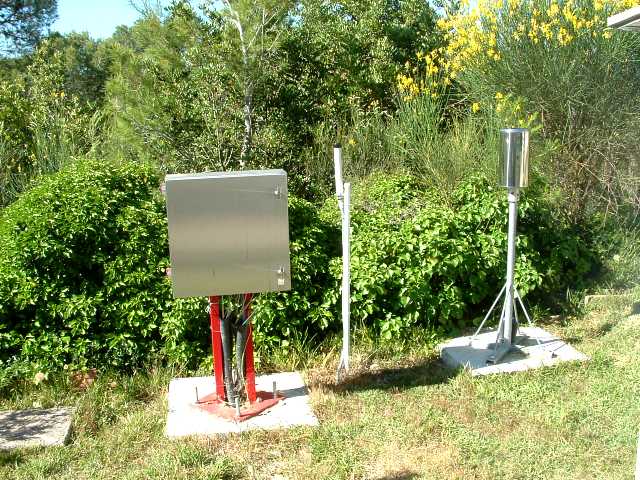The meteorological station of the Ebre Observatory is part of the ESOS (Estaciones Semiautomáticas de Observación de Superficie) network of the Spanish Meteorological Office (Agencia Estatal de Meteorología, AEMET). Every day of the year an observer makes, at least 7 times a day, measurements of temperature, relative humidity, atmospheric pressure, precipitation, wind speed and direction, evaporation, sunshine duration, total amount of clouds, type of clouds, and visibility. He also writes in the meteorological diary the presence of those phenomena that are not quantified but are observed, such as the presence of haze, fog, dew, rainbow, storm, etc.

We provide support to other institutions that are interested in having measurement points in our facilities, such as for example the Xarxa Aerobiològica de Catalunya (XAC) which has installed a sensor of pollen, the network of measurement of solar irradiance of Catalonia or the Lightning Research Group of the UPC on behalf of ASIM (Atmosphere Space Interactions Monitor) project.
In our website daily data since January 2004 is available, as well as the daily evolution of the main variables. The weather bulletin with a summary of the principal observations is published yearly and it can be downloaded from the online bulletins section.
Our set of all meteorological observations constitutes an important climatic series, which, for some of the variables, can be extended to a longer period, as since the year 1880 meteorological observations were carried out at the Colegium Maximum that the Society of Jesus had in the town of Jesús (which is located at about 2 km in a straight line from our current location). The series features two intervals without data, which are the years 1890 and 1891, in addition to 9 months of the year 1938 of which we do not have data as a consequence of the Spanish civil war. The detailed study of these series allows the characterization of our climate and the study of its variations. The normal values of the series, i.e., the 30-year average can be consulted at the AEMET web page, while the annual climate indicators of all series are available from the Servei Meteorològic de Catalunya.
INSTRUMENTATION

See Catalan or Spanish versions for a detailed description of the instruments.
Automatic weather station
It is a Thies Clima automatic station equipped with sensors for the measurement of ambient, soil and 15 cm temperature, relative humidity, wind speed and direction, atmospheric pressure, as well as a tipping-bucket gauge and a disdrometer for the precipitation, and a visibilimeter.
Manual observatory


Finally, on the roof of another building there is a heliograph for the measurement of sunshine duration, a pyrheliometer which measures the direct solar radiation, a shaded pyranometer recording the diffuse sky radiation and a pyranometer, with which the global radiation is determined. Ultraviolet and infrared radiations are also monitored.





